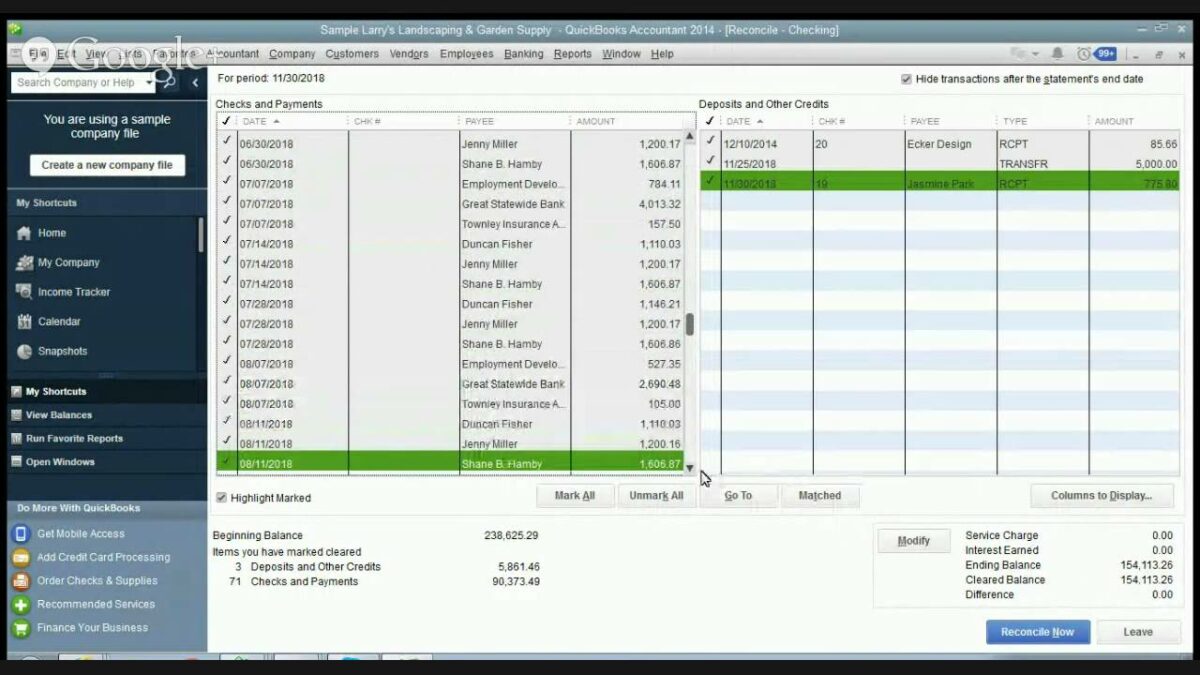Introduction to Reconciling Accounts in QuickBooks
- Understanding Account Reconciliation
- Definition and importance of reconciling accounts
- Benefits of maintaining accurate financial records in QuickBooks
- Navigating to Reconciliation
a. Accessing the Reconciliation Tool
- Logging into QuickBooks Online
- Navigating to the Banking or Accounting tab
- Selecting “Reconcile” under the specific account to be reconciled
b. Preparing for Reconciliation
- Gathering bank statements for the reconciliation period
- Ensuring all transactions are recorded and categorized in QuickBooks
Initiating the Reconciliation Process
- Entering Reconciliation Details
a. Selecting the Account and Statement Date
- Choosing the bank or credit card account for reconciliation
- Entering the statement end date and beginning balance from the bank statement
b. Verification of Transactions
- Reviewing transactions listed in QuickBooks against the bank statement
- Matching deposits, checks, and other transactions for accuracy and completeness
Reconciling Transactions
- Matching Transactions
a. Marking Transactions as Cleared
- Checking off transactions in QuickBooks that match those on the bank statement
- Ensuring reconciliation of both deposits and withdrawals accurately
b. Handling Discrepancies
- Investigating and resolving discrepancies between QuickBooks and the bank statement
- Addressing timing differences, bank fees, and outstanding checks or deposits
Reviewing Reconciliation Reports
- Generating Reconciliation Reports
a. Viewing Reconciliation Summary
- Generating reconciliation reports in QuickBooks
- Reviewing summary of reconciled and unreconciled transactions
b. Analyzing Discrepancies
- Analyzing reasons for unreconciled items or differences
- Addressing discrepancies and making adjustments as necessary
Completing the Reconciliation Process
- Finalizing Reconciliation
a. Reconciliation Completion
- Marking reconciliation as completed in QuickBooks
- Saving reconciliation reports and records for audit and reference purposes
b. Next Steps
- Reviewing post-reconciliation balances and reports
- Ensuring accuracy of financial statements and accounting records
Advanced Reconciliation Tips
- Advanced Techniques
a. Reconciling Multiple Accounts
- Managing reconciliation for multiple bank accounts or credit cards
- Using batch reconciliation methods for efficiency
b. Reconciliation Automation
- Setting up recurring reconciliation schedules in QuickBooks
- Automating bank feeds and transaction imports for real-time reconciliation
Troubleshooting and Error Handling
- Common Issues and Solutions
a. Handling Unreconciled Transactions
- Identifying and resolving outstanding items or errors
- Reconciling adjustments and corrections in QuickBooks
b. Bank Reconciliation Discrepancies
- Troubleshooting issues such as duplicate transactions or timing mismatches
- Seeking support from QuickBooks customer service or accounting professionals
Conclusion
Reconciling accounts in QuickBooks is a critical process for ensuring financial accuracy and integrity in business operations. By following this detailed guide, users can effectively manage reconciliation tasks, resolve discrepancies, and maintain up-to-date financial records. QuickBooks Online provides robust tools and features to streamline the reconciliation process, empowering businesses to make informed financial decisions and comply with accounting standards.
